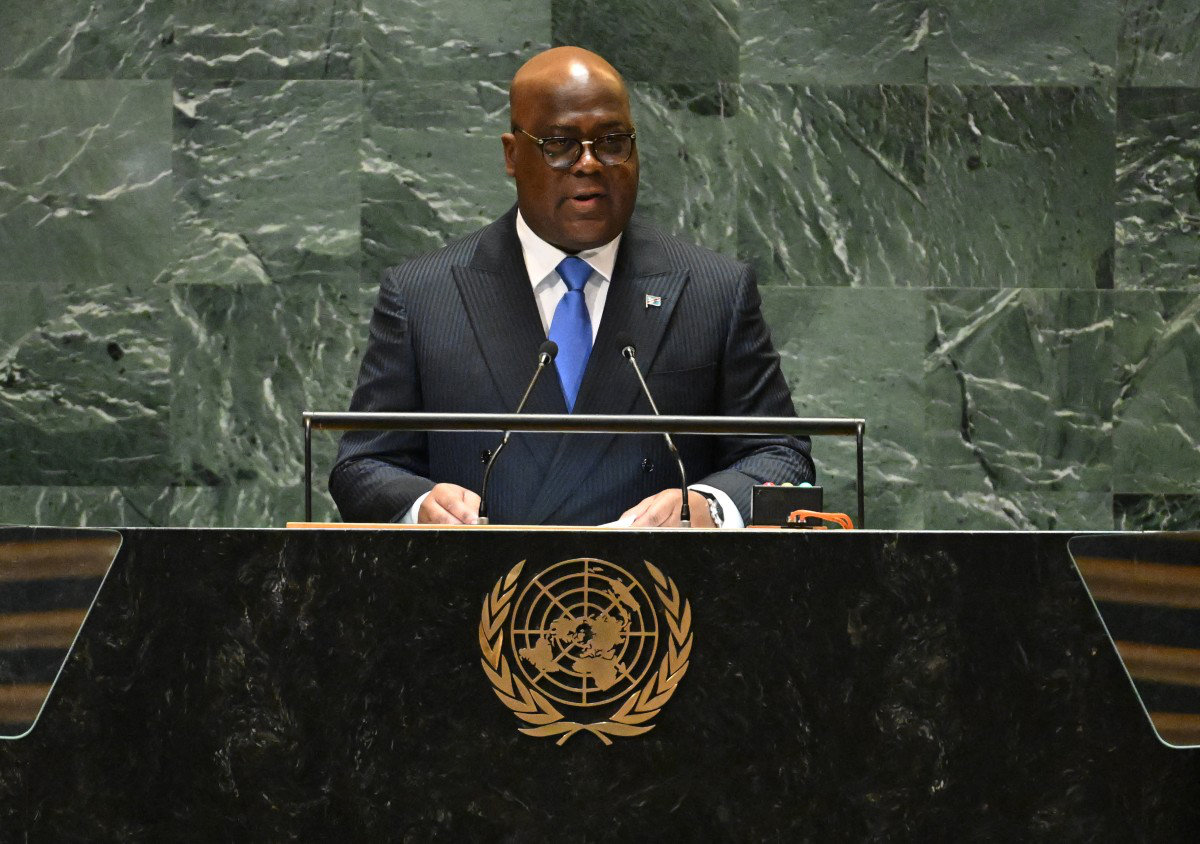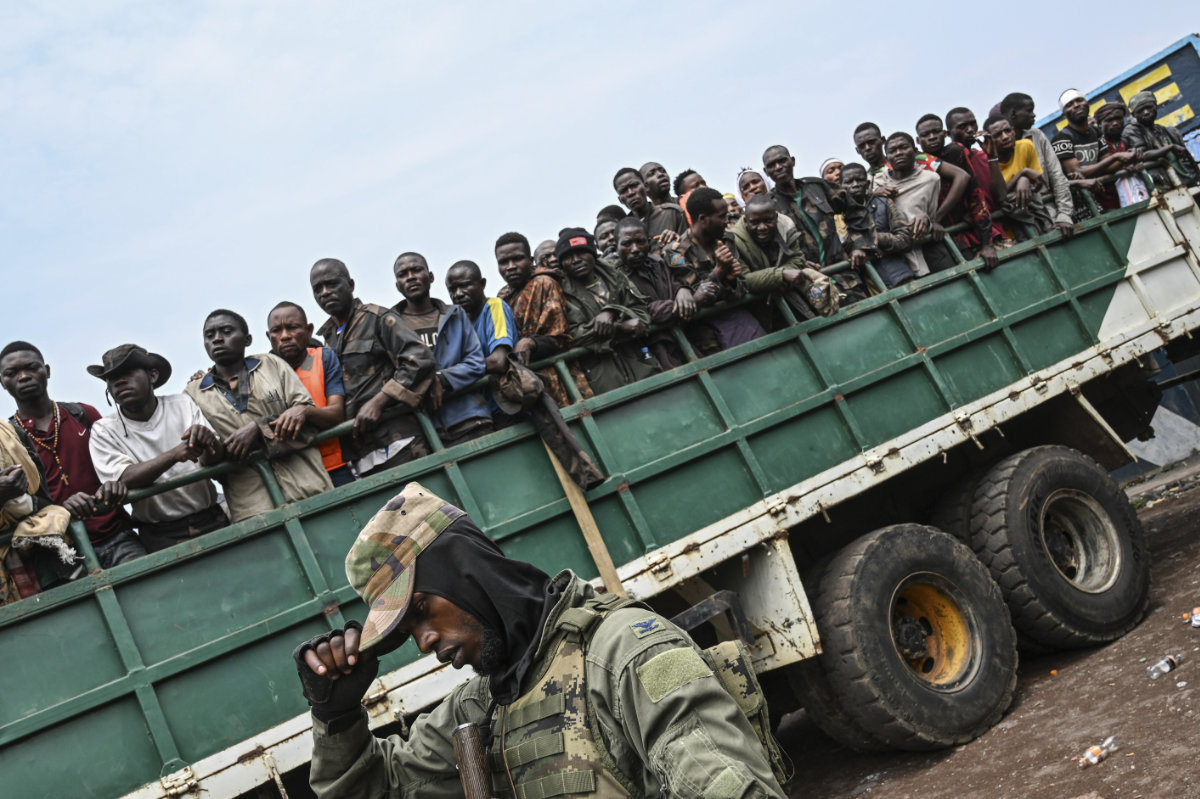WASHINGTON: President Joe Biden said Monday that his stewardship of American foreign policy has left the US safer and economically more secure, arguing that President-elect Donald Trump will inherit a nation viewed as stronger and more reliable than it was four years ago.
Biden trumpeted his administration’s work on expanding NATO, rallying allies to provide Ukraine with military aid to fight Russia and bolstering American chip manufacturing to better compete with China during a wide-ranging speech to reflect on his foreign policy legacy a week before ceding the White House to Trump.
Biden’s case for his achievements will be shadowed and shaped, at least in the near term, by the messy counterfactual that American voters once again turned to Trump and his protectionist worldview. And he will leave office at a turbulent moment for the globe, with a series of conflicts raging.
“Thanks to our administration, the United States is winning the worldwide competition compared to four years ago,” Biden said in his address at the State Department. “America is stronger. Our alliances are stronger. Our adversaries and competitors are weaker. We have not gone to war to make these things happen.”
The one-term Democrat took office in the throes of the worst global pandemic in a century, and his plans to repair alliances strained by four years of Trump’s “America First” worldview were quickly stress-tested by international crises: the chaotic US withdrawal from Afghanistan, Russia’s 2022 invasion of Ukraine, and Hamas’ brutal 2023 attack on Israel that triggered the war in the Middle East.
Biden argued that he provided a steady hand when the world needed it most. He was tested by war, calamity and miscalculation.
“My administration is leaving the next administration with a very strong hand to play,” Biden said. “America is once again leading.”
Chaotic US exit from Afghanistan was an early setback for Biden
With the US completing its 2021 withdrawal from Afghanistan, Biden fulfilled a campaign promise to wind down America’s longest war.
But the 20-year conflict ended in disquieting fashion: The US-backed Afghan government collapsed, a grisly bombing killed 13 US troops and 170 others, and thousands of desperate Afghans descended on Kabul’s airport in search of a way out before the final US aircraft departed over the Hindu Kush.
The Afghanistan debacle was a major setback just eight months into Biden’s presidency that he struggled to recover from.
“Ending the war was the right thing to do, and I believe history will reflect that,” Biden said. “Critics said if we ended the war, it would damage our alliances and create threats to our homeland from foreign-directed terrorism out of a safe haven in Afghanistan — neither has occurred.”
Biden’s Republican detractors, including Trump, cast it as a signal moment in a failed presidency.
“I’ll tell you what happened, he was so bad with Afghanistan, it was such a horrible embarrassment, most embarrassing moment in the history of our country,” Trump said in his lone 2024 presidential debate with Biden, just weeks before the Democrat announced he was ending his reelection campaign.
Biden’s legacy in Ukraine may hinge on Trump’s approach going forward
With Russia’s invasion of Ukraine, Biden rallied allies in Europe and beyond to provide Ukraine with billions in military and economic assistance — including more than $100 billion from the US alone. That allowed Kyiv to stay in the fight with Russian President Vladimir Putin’s vastly bigger and better-equipped military.
Biden’s team also coordinated with allies to hit Russia with a steady stream of sanctions aimed at isolating the Kremlin and making Moscow pay an economic price for prosecuting its war.
Biden on Monday marveled that at the start of the war Putin thought Russian forces would easily defeat Ukraine in a matter of days. It was an assessment US and European intelligence officials shared.
Instead, Biden said his administration and its allies have “laid the foundation” for the Trump administration to help Ukraine eventually arrive at a moment where it can negotiate a just end to the nearly three-year old conflict.
“Today, Ukraine is still a free and independent country with the potential for a bright future,” Biden said.
Trump has criticized the cost of the war to US taxpayers and has vowed to bring the conflict to a quick end.
White House national security adviser Jake Sullivan made the case that Trump, a billionaire real estate developer, should consider the backing of Ukraine through the prism of a dealmaker.
“Donald Trump has built his identity around making deals, and the way you make a good deal is with leverage,” Sullivan said in an interview. “Our case publicly and privately to the incoming team is build the leverage, show the staying power, back Ukraine, and it is down that path that lies a good deal.”
Biden’s Mideast diplomacy shadowed by devastation of Gaza
In the Middle East, Biden has stood by Israel as it has worked to root out Hamas from Gaza. That war spawned another in Lebanon, where Israel has mauled Iran’s most powerful ally, Hezbollah, even as Israel has launched successful airstrikes openly inside of Iran for the first time.
The degradation of Hezbollah in turn played a role when Islamist-led rebels last month ousted longtime Syrian leader Bashar Assad, a brutal fixture of Iran’s “Axis of Resistance.”
“Iran is weaker than it’s been in decades,” Biden said.
Biden’s relationship with Israel’s conservative leader Prime Minister Benjamin Netanyahu has been strained by the enormous Palestinian death toll in the fighting — now standing at more than 46,000 dead — and Israel’s blockade of the territory, which has left much of Gaza a hellscape where access to food and basic health care is severely limited.
Pro-Palestinian activists have demanded an arms embargo against Israel, but US policy has largely remained unchanged. The State Department in recent days informed Congress of a planned $8 billion weapons sale to Israel.
Aaron David Miller, a former State Department Middle East negotiator, said the approach has put Iran on its heels, but Biden will pay a reputational cost for the devastation of Gaza.
“The administration was either unable or unwilling to create any sort of restraint that normal humans would regard as significant pressure,” Miller said. “It was beyond Joe Biden’s emotional and political bandwidth to impose the kinds of sustained or significant pressures that might have led to a change in Israeli tactics.”
More than 15 months after the Hamas-led attack that prompted the war, around 98 hostages remain in Gaza. More than a third of those are presumed dead by Israeli authorities.
Biden’s Middle East adviser Brett McGurk is in the Middle East, looking to complete an elusive hostage and ceasefire deal as time runs out in the presidency.
“We are on the brink of a proposal that I laid out in detail months ago finally coming to fruition,” Biden said.
Trump, for his part, is warning that “all hell” will be unleashed on Hamas if the hostages aren’t freed by Inauguration Day.
Sullivan declined to comment on Trump’s threats to Hamas, but offered that the two sides are in agreement about the most important thing: getting a deal done.
“Having alignment of the outgoing and incoming administration that a hostage deal at the earliest possible opportunity is in the American national interest,” he said. “Having unity of message on that is a good thing, and we have closely coordinated with the incoming team to this effect.”































